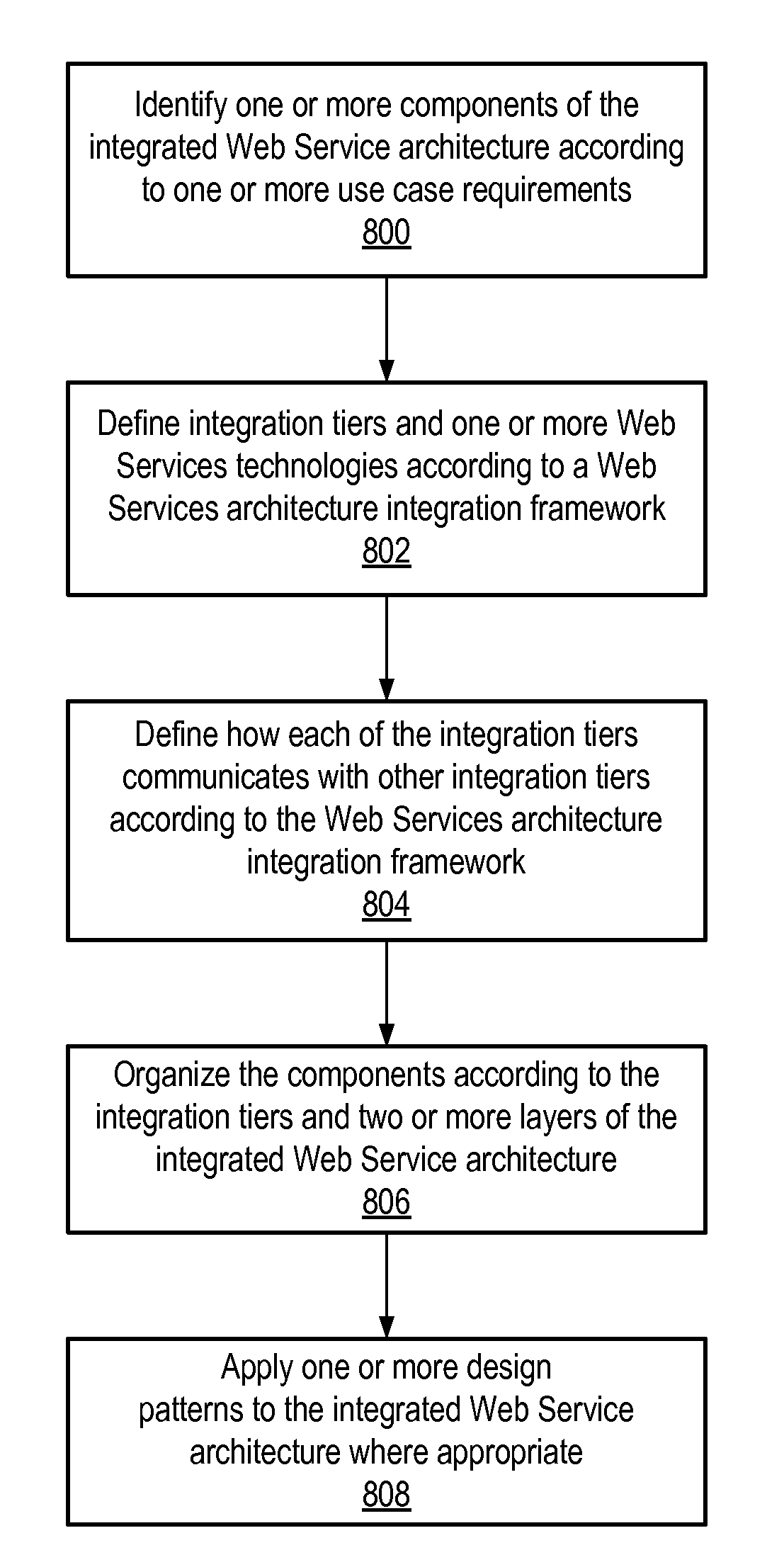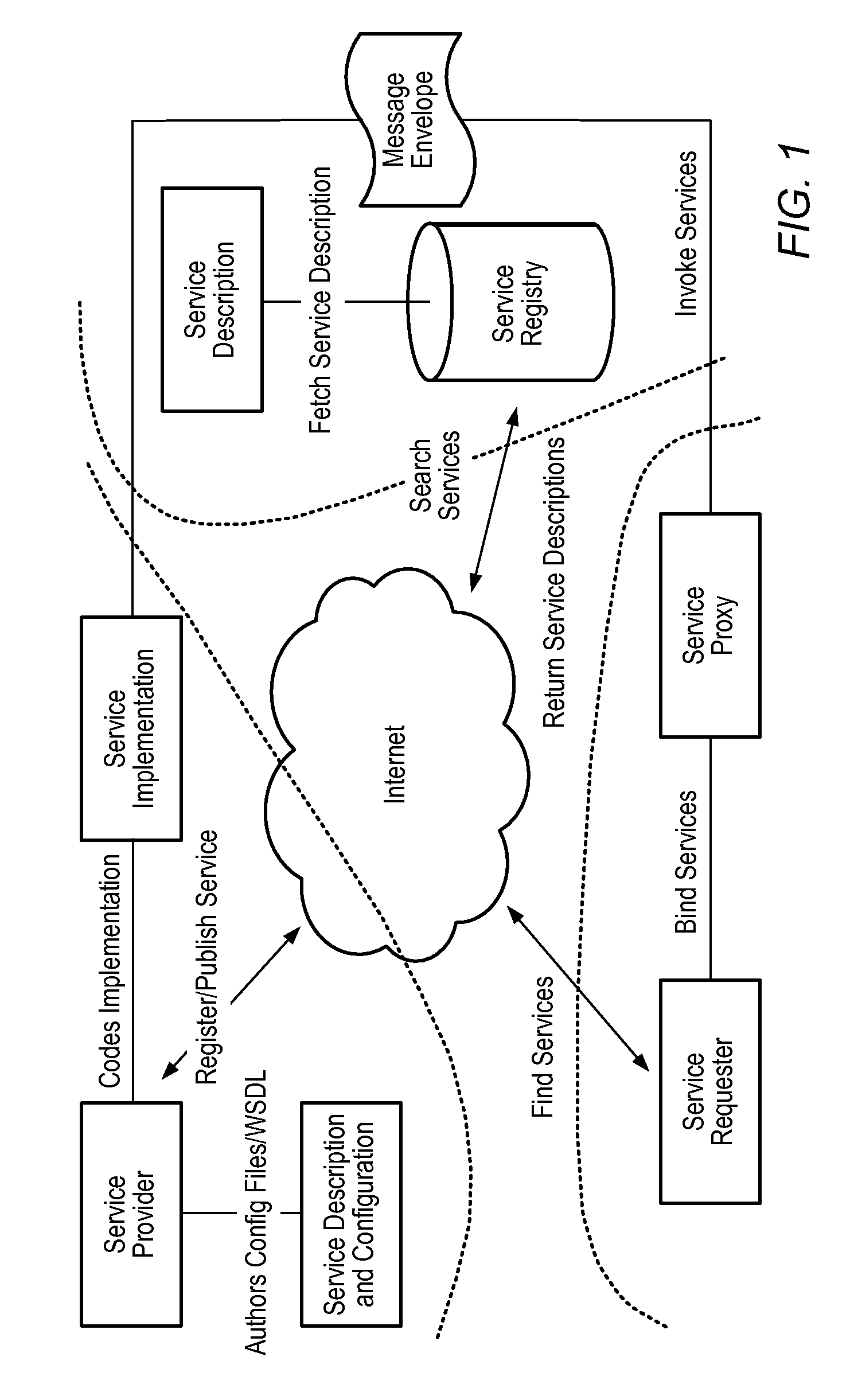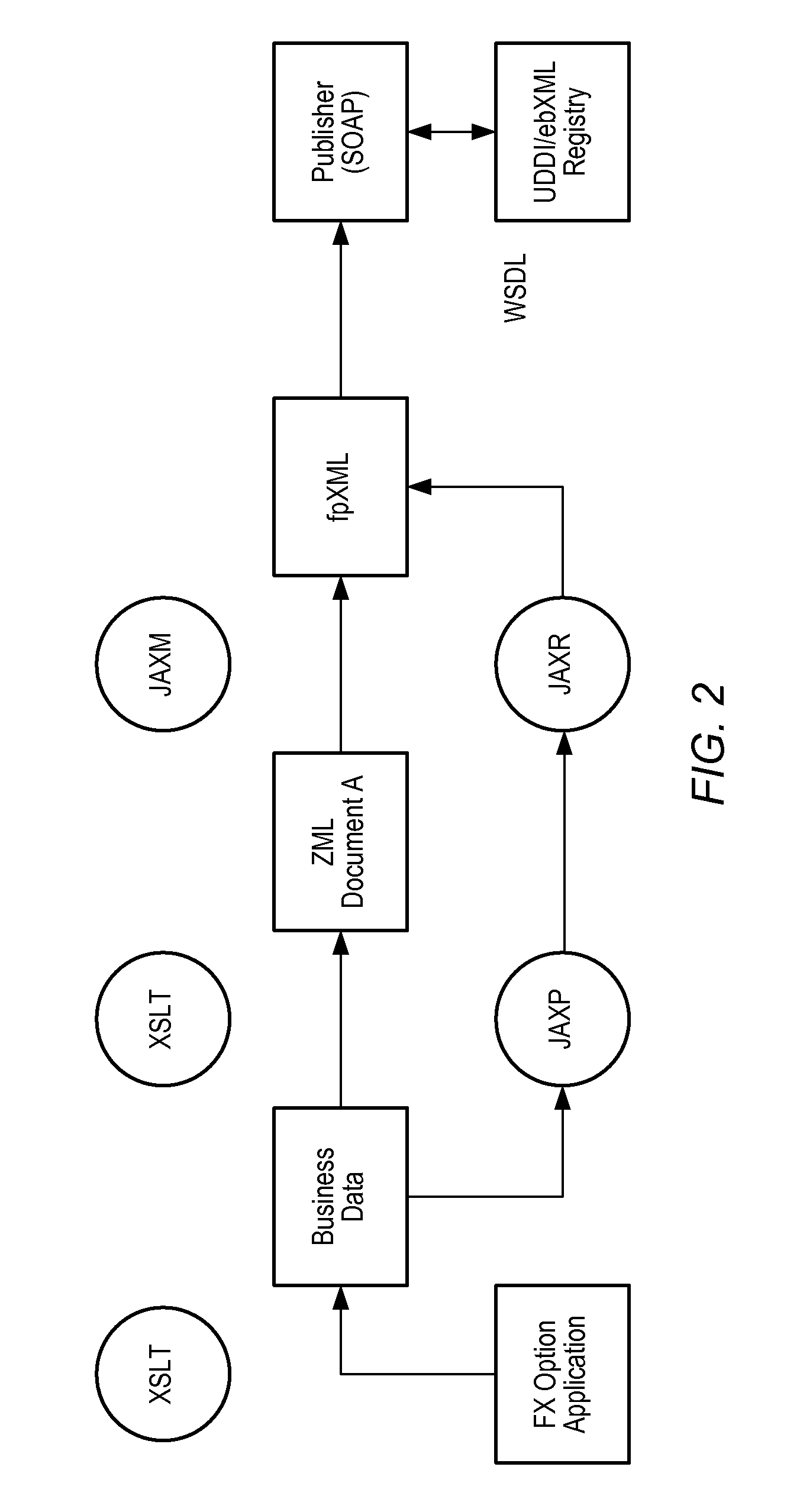[0020]The
Java™
XML Pack (JAX Pack) is an all-in-one download of
Java technologies for
XML.
Java™ XML Pack brings together several of the key industry standards for XML—such as SAX, DOM,
XSLT,
SOAP, UDDI, ebXML, and WSDL—into one convenient download, thereby giving developers the technologies needed to get started with Web applications and services.
[0037]JAXM refers to the Java technology support for sending and receiving
SOAP messages, which is based on the SOAP 1.1 and the SOAP with Attachment specifications. It supports higher level and application-specific protocols built on top of SOAP, including multiple transports such as HTTP, SMTP, and so forth. In addition, JAXM supports both synchronous (request-reply) and asynchronous (one-way) mode. JAXM is preferable to JAX-RPC because of its support for asynchronous messaging, multiparty
message routing, and
reliable messaging (that is, guaranteed delivery). JAXM is a pluggable provider class for the SOAP
server. The provider class supports different data transports, such as HTTP, SMTP, and JMS. For example, if Company X sends a
SOAP message using a SOAP provider over HTTP to Company Y, the JAXM provider will create a connection to the specified URL endpoint with Company A's SOAP provider, create a
SOAP message instance, and get the SOAP envelope and body. With JAXM, developers can make SOAP messaging reliable with message
acknowledgement and guaranteed
message delivery using JMS.
[0039]In the JAXB architecture, the utility xjc creates Java source files to bind a DTD or
XML Schema to Java
data objects. Developers can then add additional
program code if necessary and compile the Java source files into
Java classes for execution. This can potentially reduce some coding effort and
processing time to transcode XML elements in an XML document using JAXP. JAXB version 1.0 supports both DTD and
XML Schema. Developers can use the same xjc
compiler to generate Java binding files for an
XML Schema under Windows or
Unix. Using JAXB to bind an XML Schema to the Java
data structure, developers can probably write less
program code using an XML parser (such as DOM or SAX) to transform XML content into Java
data objects. This is a considerable benefit to the productivity.
[0040]JAXR is a standard Java API for accessing diverse and heterogeneous Business Service Registries. It is a unified
information model for describing business registry content. It provides multi-layered API abstractions for simple, high-level, business API, and flexible, low-level, generic API. It is the enabling technology for Web Services and peer-to-peer computing in the J2EE™. In the JAXR architecture, a JAXR
client is basically a registry
client (RC) that is connected to the registry service (RS) via a JAXR pluggable provider. The JAXR provider is able to use any capability-specific interfaces such as ebXML provider or UDDI provider that is specific to a particular Service Registry platform. Developers can also write their own JAXR provider class to accommodate any new Service Registry platform. In this way, the JAXR
client only needs to use one single set of
program code to access different service registries; it need not be rewritten and recompiled.
[0041]JAX-RPC stands for Java API for XML-based Remote
Procedure Calls (RPC). JAX-RPC enables Java technology developers to build Web applications and Web Services incorporating XML-based RPC functionality according to the SOAP 1.1 specification. JAX-RPC allows distributed client /
server mode over the Web using the Standard Web Services technologies: SOAP, WSDL, and HTTP. Using the JAX-RPC API and the tools, it simplifies the creation of a
Web Service for a Java
programmer as it hides all the complexities of generating SOAP and WSDL, but provides tools to generate these using Java Interfaces and some additional configuration information. All the code to map Java
data type information to XML / SOAP is generated by the tools “wscompile” and “wsdeploy” from Java Web Services Developer Pack (JWSDP) 1.0.1 (which supersedes the tool “xrpcc” in JWSDP 1.0). The JAX-RPC runtime will take care of the transport. In the JAX-RPC architecture, in order to invoke a remote business service, the client program needs to install a “stub,” which enables it to communicate with the remote application service via the remote “ties.” Both the client and the remote
server (services) need to install JAX-RPC runtime, which enables both ends to exchange SOAP messages. This is a typical
Remote Procedure Call model.
[0060]Embodiments may provide an integrated Web Services architecture design mechanism that may be used for Enterprise and Cross-
Enterprise integration of Web Services. In one embodiment, the integrated Web Services architecture design mechanism may implement an enterprise / cross-
enterprise integration framework which may include Business-to-
Business integration patterns that illustrate how Java Web Services and EAI technology may be collaborated, Web Services technologies which may be appropriate for
enterprise integration and to differentiate
Enterprise Application Integration from Web Services, and Web Services technology integration design patterns for easing enterprise and cross-
enterprise integration. The integration framework may be used to define different integration tiers and basic components and / or enabling technology for enterprise and cross-enterprise integration. The integration framework may also outline how each integration tier communicates with other tiers. The integration framework may mix-and-match implementing any EAI vendor products with Web Services technology.
 Login to View More
Login to View More  Login to View More
Login to View More 


